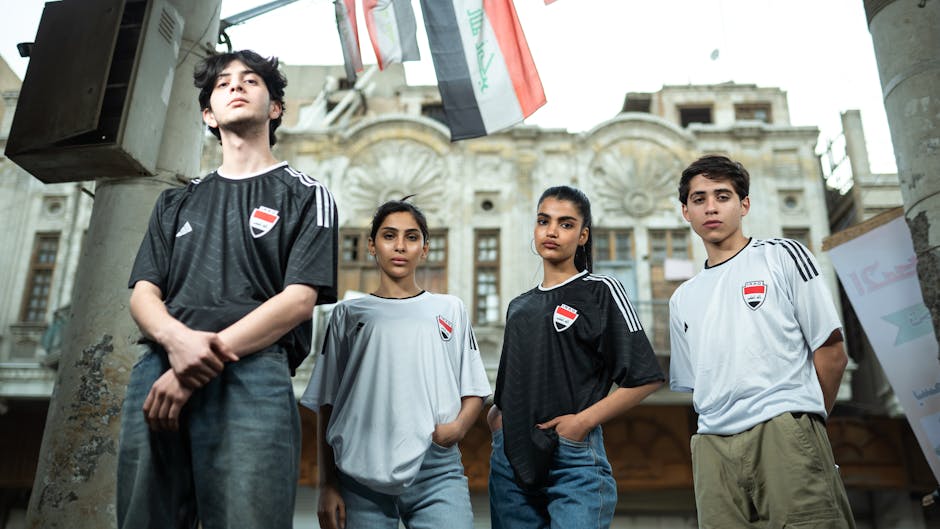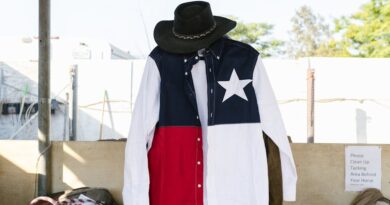Cultural Identity Through Fashion: Exploring the Intersection of Style and Heritage
From the intricate patterns of a traditional kimono to the vibrant colors of an African wax print dress, fashion has been a powerful tool for expressing cultural identity across the globe. Each garment, accessory, or hairstyle can tell a story about one’s heritage, beliefs, and values, creating a visual representation of one’s cultural roots. In this article, we delve into the fascinating world of ‘Cultural Identity Through Fashion’, exploring how clothing can serve as a vehicle for self-expression, preservation of traditions, and celebration of diversity.
The Historical Significance of Cultural Fashion

Throughout history, clothing has played a crucial role in defining cultural identity. Different regions of the world developed unique styles and techniques that reflected their customs, climate, and social hierarchy. For example, the intricate beadwork of Native American garments not only served as a form of artistic expression but also conveyed spiritual beliefs and tribal affiliations. Similarly, the elaborate embroidery of Chinese silk garments symbolized wealth and status, showcasing the wearer’s social standing.
As societies evolved and globalized, cultural fashion became a means of resistance against colonialism and a way to reclaim indigenous heritage. During the Harlem Renaissance in the 1920s, African American artists and intellectuals used fashion as a form of self-empowerment, embracing African-inspired prints and designs to challenge Eurocentric beauty standards. In more recent times, the rise of the ‘ethnic chic’ trend has seen mainstream designers drawing inspiration from diverse cultures, sparking conversations about cultural appropriation versus appreciation in the fashion industry.
The Role of Fashion in Ethnic Identity

For many individuals, especially those from marginalized communities, fashion serves as a way to assert their ethnic identity and resist assimilation into dominant cultures. Immigrants, second-generation diaspora, and indigenous peoples often use clothing as a means of preserving their heritage and connecting with their roots. Whether it’s wearing traditional garments during cultural celebrations or incorporating ethnic motifs into everyday attire, fashion becomes a tangible link to one’s ancestry and a form of cultural pride.
In some cases, fashion can also be a form of cultural resistance against homogenizing forces. In the face of globalization and fast fashion, indigenous artisans and designers are reclaiming traditional techniques and materials to create sustainable, ethically-made garments that celebrate their cultural heritage. By promoting traditional craftsmanship and supporting local communities, these fashion pioneers are preserving endangered cultural practices and fostering intercultural dialogue.
Fashion as a Tool for Cultural Exchange

One of the most compelling aspects of cultural fashion is its ability to facilitate cross-cultural exchange and foster mutual understanding between diverse communities. Fashion shows, exhibitions, and collaborations provide a platform for designers from different backgrounds to showcase their work, share their stories, and challenge stereotypes. Through the language of style, individuals can transcend barriers of language and geography, building connections based on creativity and shared values.
Furthermore, the rise of social media and digital platforms has enabled cultural fashion to reach a global audience, allowing designers and artisans to showcase their creations to a diverse and inclusive community. Fashion bloggers, influencers, and online retailers have played a significant role in promoting diversity and representation in the industry, highlighting the beauty of traditional textiles, techniques, and craftsmanship from around the world.
Cultural Appropriation vs. Cultural Appreciation

As the lines between cultural influence and exploitation continue to blur in the fashion world, the debate surrounding cultural appropriation versus cultural appreciation has become increasingly complex. While cultural exchange can be a positive force for creativity and innovation, it is essential to recognize the power dynamics at play and the need for respectful collaboration with communities whose cultural heritage is being referenced.
Designers and brands must navigate the fine line between inspiration and appropriation, ensuring that they give credit to the origins of their designs, compensate artisans fairly, and engage in meaningful partnerships with cultural practitioners. By fostering a culture of transparency, accountability, and ethical practices, the fashion industry can promote cultural diversity and empower marginalized voices, rather than perpetuating stereotypes and erasing indigenous knowledge.
The Future of Cultural Fashion
As we look towards the future, the role of cultural fashion in shaping our collective identity and promoting social cohesion has never been more critical. By embracing diversity, fostering inclusivity, and amplifying marginalized voices, the fashion industry can become a powerful agent of change, challenging conventional beauty standards and redefining the narrative of what it means to be fashionable.
From sustainable fashion initiatives that prioritize ethical production practices to community-led fashion projects that celebrate cultural heritage, there is a growing movement towards a more conscious and inclusive fashion ecosystem. By supporting independent designers, artisans, and initiatives that champion cultural diversity, we can create a more vibrant and equitable fashion landscape that honors and celebrates the richness of our collective heritage.
Common Misconceptions
One common misconception about cultural fashion is that it is purely aesthetic and devoid of deeper meaning or significance. In reality, every garment, accessory, or hairstyle carries a wealth of cultural symbolism and historical context, reflecting the values, beliefs, and traditions of the community that created it. By exploring the stories behind these cultural artifacts, we can gain a deeper appreciation for the diversity and complexity of human expression through fashion.
FAQs
Q: How can I incorporate elements of cultural fashion into my wardrobe respectfully?A: When incorporating elements of cultural fashion into your wardrobe, it’s essential to educate yourself about the origins and significance of the garments, accessories, or textiles you are wearing. Support ethical and sustainable brands that work directly with artisans and communities, and be mindful of the cultural context and symbolism of the pieces you choose to wear.
To Wrap Things Up
In conclusion, ‘Cultural Identity Through Fashion’ is a multifaceted and dynamic phenomenon that transcends borders, languages, and generations. By embracing diversity, promoting inclusivity, and engaging with cultural fashion in a respectful and ethical manner, we can celebrate the richness of our shared heritage and create a more equitable and vibrant fashion landscape for future generations to enjoy.




